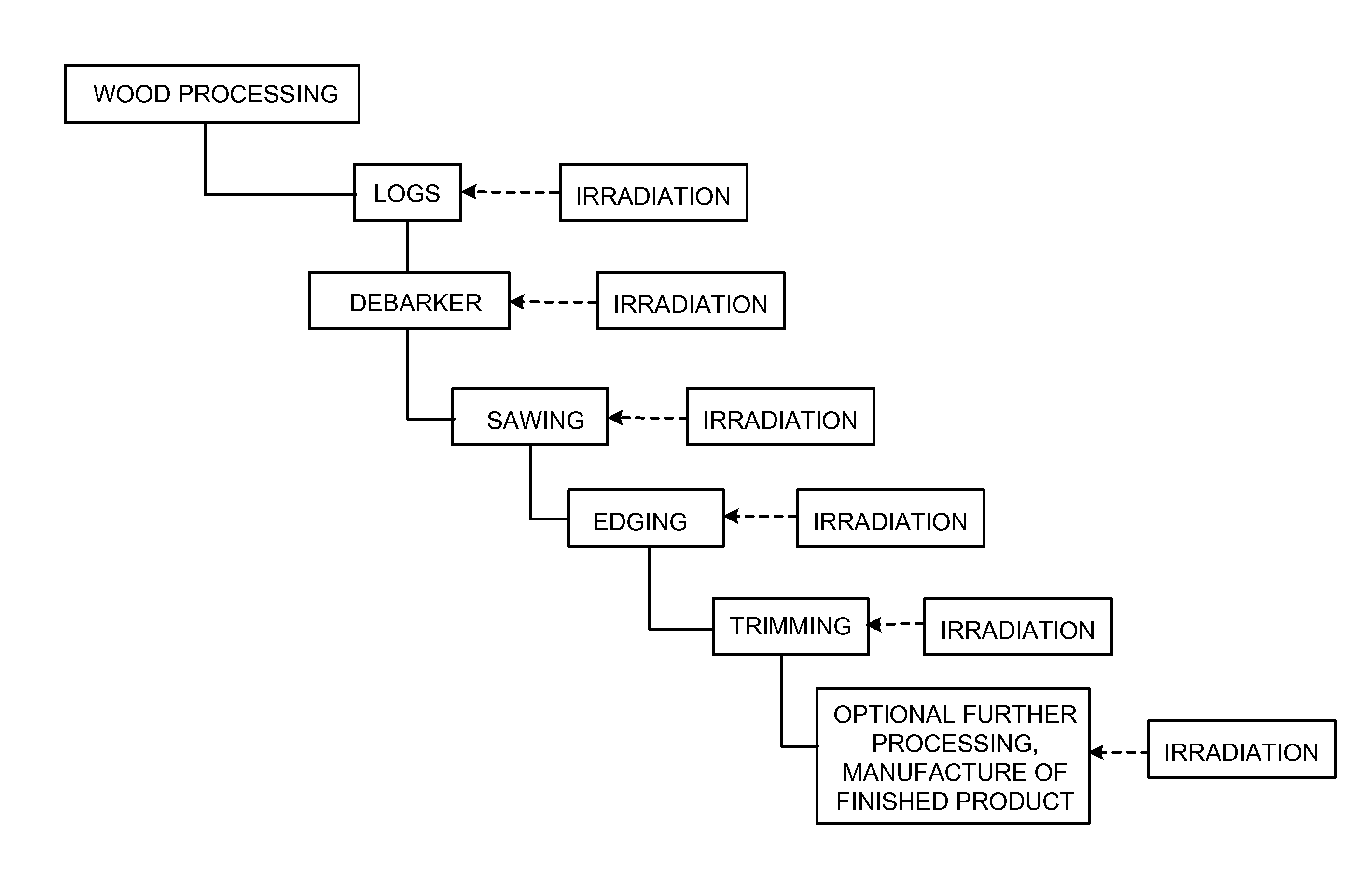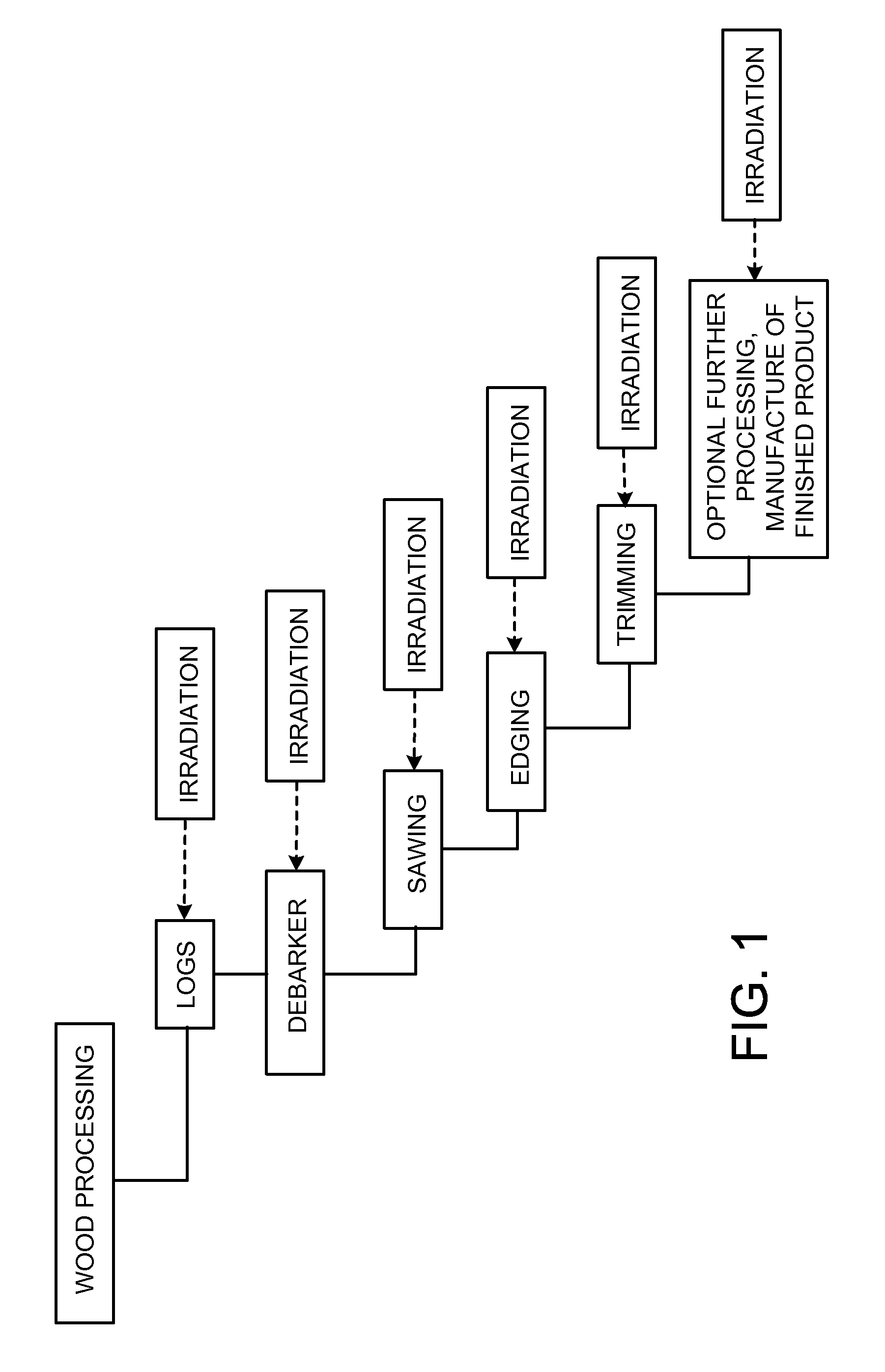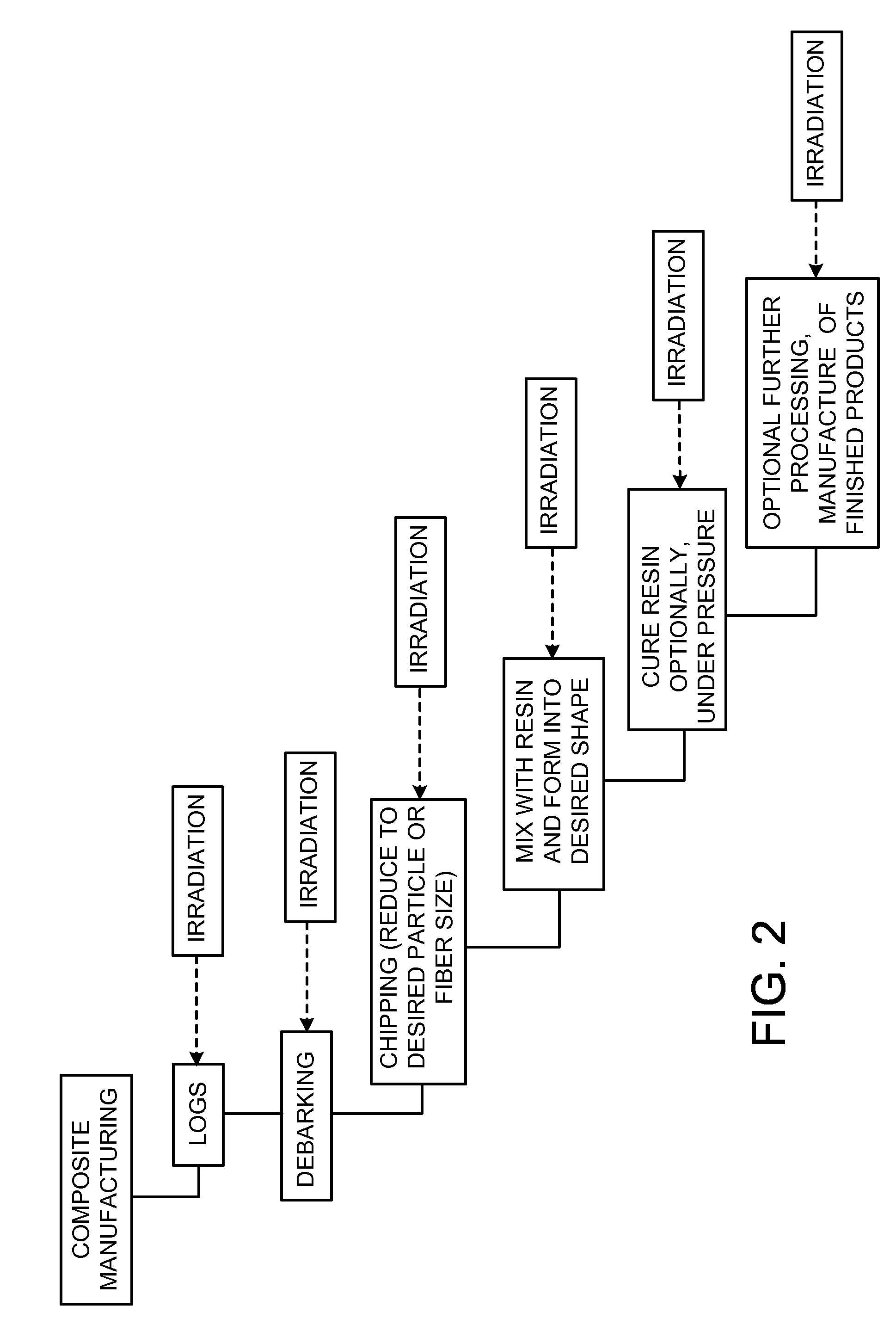Cellulosic and lignocellulosic structural materials and methods and systems for manufacturing such materials
a technology of lignocellulosic and structural materials, applied in the field of cellulosic and lignocellulosic structural materials, can solve problems such as unsuitability for some applications
- Summary
- Abstract
- Description
- Claims
- Application Information
AI Technical Summary
Benefits of technology
Problems solved by technology
Method used
Image
Examples
example 1
Methods of Determining Molecular Weight of Cellulosic and Lignocellulosic Materials by Gel Permeation Chromatography
[0205]This example illustrates how molecular weight is determined for the materials discussed herein. Cellulosic and lignocellulosic materials for analysis were treated as follows:
[0206]A 1500 pound skid of virgin bleached white Kraft board having a bulk density of 30 lb / ft3 was obtained from International Paper. The material was folded flat, and then fed into a 3 hp Flinch Baugh shredder at a rate of approximately 15 to 20 pounds per hour. The shredder was equipped with two 12 inch rotary blades, two fixed blades and a 0.30 inch discharge screen. The gap between the rotary and fixed blades was adjusted to 0.10 inch. The output from the shredder resembled confetti (as above). The confetti-like material was fed to a Munson rotary knife cutter, Model SC30. The discharge screen had ⅛ inch openings. The gap between the rotary and fixed blades was set to approximately 0.020...
example
Radiation Treatment of Boxwood Samples
[0216]Boxwood boards, ⅛ inch thick, were treated with electron beam radiation (a 5 MeV beam), at dosages from 1 MRad to 100 MRads, with the number next to the “B” in the Tables below indicating the dosage received (e.g., B means a board that was not irradiated, B1 means a board that received 1 MRad, and B10 means a board that received 10 MRads.) The flexural strength of the boards was then tested using ASTM D 790 and D 143 (cross head speed was 0.1 inch / min and span / thickness was 14:1), and the tensile strength was tested using ASTM D 638 (using Type I specimens and a cross head speed of 0.2 inch / min). The results of this testing are shown in Tables I and II, below.
TABLE ISummary of Test Results - Flexural StrengthSample IdentificationAverageFlexural Strength (psi) Individual ValuesB1160010800, 11900, 10800, 12000, 12600B11330013600, 12700, 13800, 13300B32020021400, 20000, 18700, 20700B51650016100, 15600, 16700, 17600B71070011700, 11200, 8920, 1...
example 3
Preparation of Sheared Fibrous Material From Bleached Kraft Board
[0217]A 1500 pound skid of virgin bleached white Kraft board having a bulk density of 30 lb / ft3 was obtained from International Paper. The material was folded flat, and then fed into a 3 hp Flinch Baugh shredder at a rate of approximately 15 to 20 pounds per hour. The shredder was equipped with two 12 -inch rotary blades, two fixed blades and a 0.30 -inch discharge screen. The gap between the rotary and fixed blades was adjusted to 0.10 -inch. The output from the shredder resembled confetti. The confetti-like material was fed to a Munson rotary knife cutter, Model SC30. The discharge screen had ⅛-inch openings. The gap between the rotary and fixed blades was set to approximately 0.020 inch. The rotary knife cutter sheared the confetti-like pieces across the knife-edges. The material resulting from the first shearing was fed back into the same setup and the screen was replaced with a 1 / 16-inch screen. This material was ...
PUM
| Property | Measurement | Unit |
|---|---|---|
| energy | aaaaa | aaaaa |
| energy | aaaaa | aaaaa |
| energy | aaaaa | aaaaa |
Abstract
Description
Claims
Application Information
 Login to View More
Login to View More - R&D
- Intellectual Property
- Life Sciences
- Materials
- Tech Scout
- Unparalleled Data Quality
- Higher Quality Content
- 60% Fewer Hallucinations
Browse by: Latest US Patents, China's latest patents, Technical Efficacy Thesaurus, Application Domain, Technology Topic, Popular Technical Reports.
© 2025 PatSnap. All rights reserved.Legal|Privacy policy|Modern Slavery Act Transparency Statement|Sitemap|About US| Contact US: help@patsnap.com



